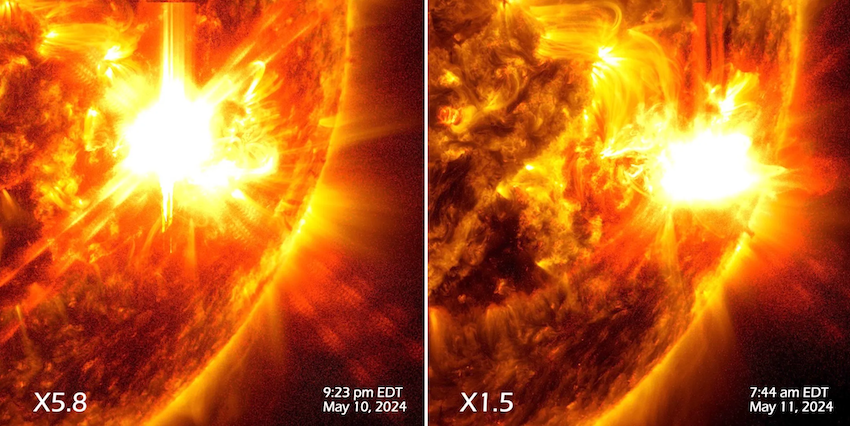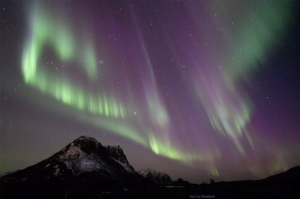
Major Storms from the Sun
The Earth recently witnessed a celestial spectacle unlike any seen in the past 20 years. A sequence of potent X-class solar flares erupted from a colossal sunspot, designated AR3664, which is 15 times the diameter of our Earth. These flares unleashed a rain of charged particles that collided with our planet’s magnetic field, triggering a highly intense geomagnetic storm, classified as level G3 (strong) by the National Oceanic and Atmospheric Administration’s (NOAA) Space Weather Prediction Centre (SWPC).
This storm wielded diverse effects. Initially, it orchestrated breath-taking aurora displays, with vivid hues dancing across the night sky in multiple locales. This stunning cosmic ballet birthed auroras (aurora borealis) at unusually low latitudes in the Northern Hemisphere, captivating sky-watchers –even along the Black Sea coast of Türkiye.
However, this mesmerizing spectacle came with a hidden toll. The heightened solar activity triggered power outages and disrupted high-frequency radio communications in some areas. Furthermore, the storm’s impact extended to inducing currents in power grids, heightening the risk of potential infrastructure damage. While major outages were averted, this event underscored the imperative for space weather monitoring and mitigation strategies.
Sunspot AR3664 remains a focal point for scientists. Sunspots denote specific regions on the Sun’s surface boasting intense magnetic fields, cooler than the surrounding temperature, hence appearing darker. These unstable regions have the capacity to generate formidable solar flares, expelling radiation and charged particles into the cosmic void. X-Class solar flares, the most “energetic” type, pose a substantial threat as they can disrupt satellites, GPS navigation systems, and other technological infrastructures we rely upon.
Starlink, the satellite division of Elon Musk’s SpaceX, recently issued a warning regarding service disruptions due to the Earth enduring the most potent geomagnetic storm induced by solar activity in the past two decades. Musk had earlier posted on X that Starlink satellites were under considerable strain from the geomagnetic storm, albeit holding up so far.
Officials at NOAA’s Space Weather Prediction Centre (SWPC) disclosed that the dynamic solar flare occurred on Saturday, May 10, emanating from the active sunspot region AR3664, registering as a monumental X5.8-class flare. Consequently, certain parts of Earth facing the Sun encountered either temporary or complete loss of high-frequency (HF) radio signals. Another formidable X1.5 solar flare occurred at 11:44 GMT, as stated by NASA officials. X-Class solar flares represent the zenith of solar flares, and while they can persist for minutes to hours, such high magnitudes is relatively uncommon.
The recent solar storm stands as a stark reminder, compelling us to acknowledge the Sun’s influence on our planet and its potential to disrupt our way of life. By persisting in unravelling the mysteries of space weather and investing in protective measures, we may secure a more resilient future for our technology-dependent world.
Several measures can be undertaken to mitigate the impact of solar storms:
-Early Warning Systems: Implementing systems capable of forecasting solar storms in advance and disseminating warnings to pertinent organisations and the public.
-Reinforced Technological Infrastructure: Strengthening power grids and other critical infrastructure to withstand the impact of solar storms.
-Contingency Plans: Formulating strategies to address challenges that may arise during a solar storm.
Given the significant repercussions solar storms and flares can inflict upon the Earth, it is imperative to conduct research to comprehend these phenomena and be prepared to mitigate their consequences.
REFERENCES
- 1. https://www.space.com/powerful-solar-flare-x-class-eruption-from-giant-sunspot-ar3664-may-10-video
- 2. https://www.swpc.noaa.gov/
- 3. https://www.earth.com/news/secondary-peak-extreme-geomagnetic-solar-storm-expected-today/
